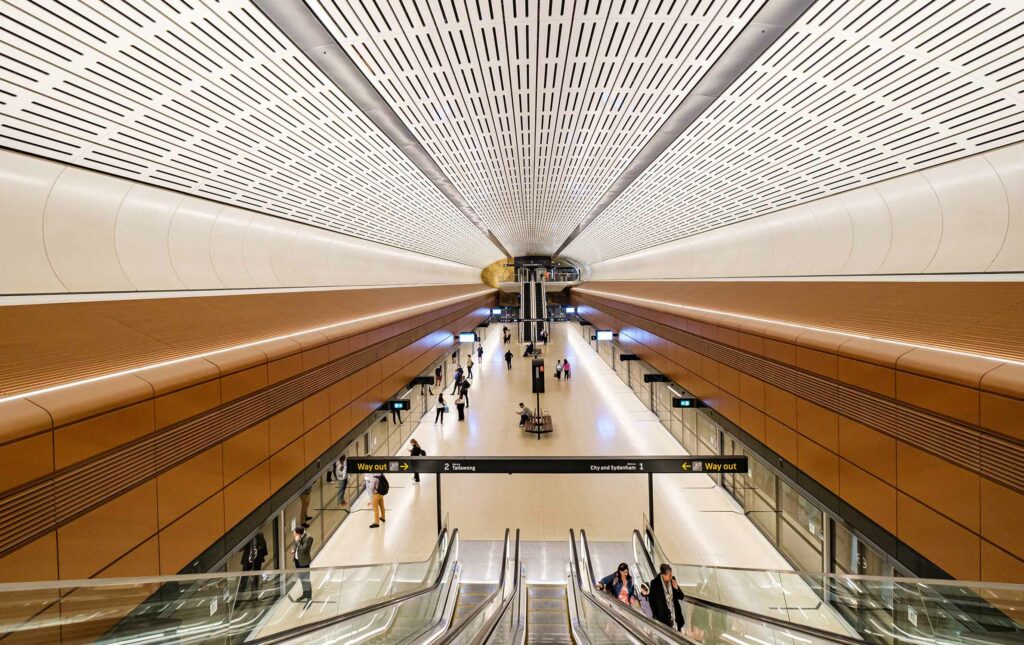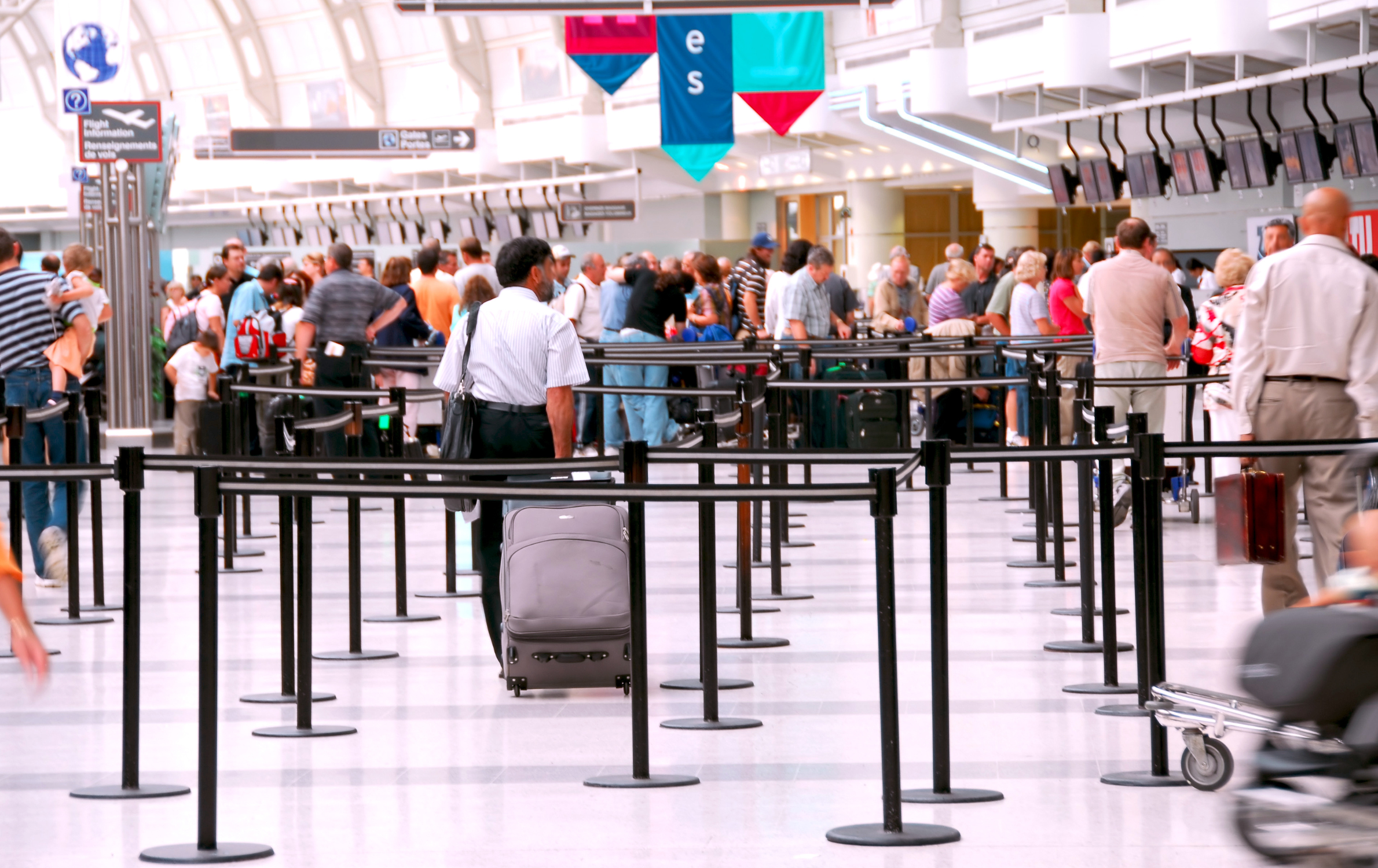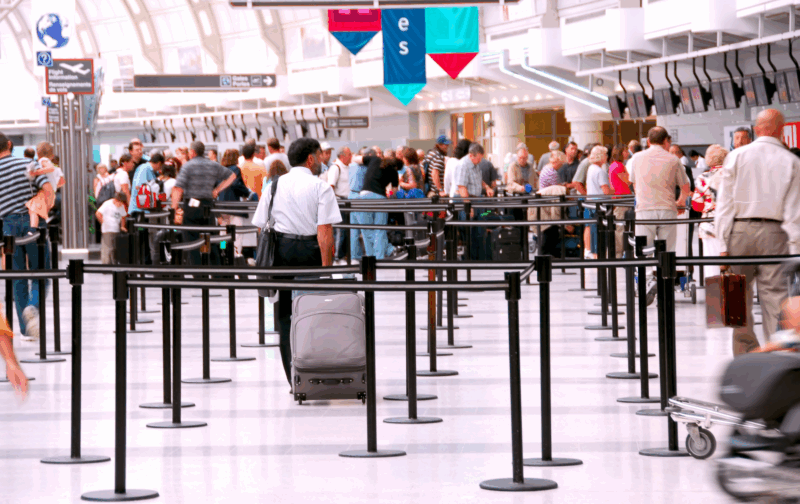Travel through an airport is only part of a journey – whether for business or pleasure. But issues at check-in, security or baggage can negatively affect the lasting memory of the wider holiday or trip.
Ensuring a streamlined process throughout airports can create a seamless passenger experience. This helps improve services, safety, and satisfaction.
The check-in and security screening processes are crucial stages of the airport journey that can significantly impact that passenger experience. Human factors interventions are instrumental in streamlining these procedures, making them more user-friendly, efficient, and less stressful for travellers.
In the second in our series looking at the role of human factors at airports – SYSTRA’s Principal Consultant in human factors, Dr George Sammonds, explores how a range of considerations can enhance check-in and security processes.
Adapting the self-check-in process at airports
Self-check-in kiosks have become increasingly prevalent at airports, allowing passengers to complete the check-in process independently. Human factors experts collaborate with designers to create user-friendly interfaces, intuitive touchscreens, and clear instructions that guide passengers through the self-check-in process. Considerations such as font size, colour contrast, and logical flow of steps are taken into account to ensure passengers, regardless of age or technological proficiency, can easily navigate the kiosk. User-centred design principles optimise the kiosk’s layout and functionality, simplifying the check-in process and reducing reliance on staff assistance.
Airport biometrics to heighten passenger security
Biometric identification, such as facial recognition or fingerprint scanning, is gaining traction as a way of enhancing security while expediting the passenger journey. Human factors considerations play a significant role in the design and implementation of biometric systems. Usability testing and user feedback helps refine the user experience, ensuring the biometric identification process is seamless, reliable, and minimally intrusive. Human factors specialists collaborate with technology experts to address potential concerns, such as privacy, consent, and system errors, while optimising accuracy and efficiency.

Security systems at airports to streamline the screening process
Technology-driven automated security systems are revolutionising the passenger screening process. Advanced imaging scanners, millimetre-wave technology, and automated threat detection algorithms help improve security while expediting the screening process. Human factors experts collaborate with security specialists to design the layout and flow of security checkpoints, considering factors such as passenger movement, queue management, and the placement of equipment. Designing checkpoints with clear signage, easy-to-understand instructions, and efficient placement of trays and personal belongings reduces passenger confusion and minimises the time required for the screening process.
Considering diverse profiles in user-centred design (UCD)
User-centred design (UCD) principles play a crucial role in creating a positive and efficient check-in and security experience. Human factors specialists conduct research and user studies to understand passenger needs, preferences, and pain points during these processes. By considering diverse user profiles, cultural differences, and accessibility requirements, they ensure the check-in and security procedures cater to a wide range of passengers. User-centred design focuses on clear communication, intuitive interfaces, and logical flow, reducing anxiety, confusion, and the likelihood of errors or delays.
Providing staff training and enhancing airport interactions
Human factors interventions extend to the training of airport staff who interact with passengers during check-in and security processes. Training programs equip staff with effective communication skills, empathy, and a customer-centric approach. Staff members are trained to provide clear instructions, offer assistance, and handle challenging situations with professionalism and sensitivity. Well trained staff who engage with passengers in a friendly and efficient manner contribute to a positive atmosphere, alleviate stress, and ensure a smooth and enjoyable check-in and security experience.
At almost every stage, human factors considerations significantly enhance the check-in and security processes at airports. By incorporating user-centred design principles, leveraging technology, and investing in staff training, airports can streamline these procedures, making them more efficient, user-friendly, and less stressful for passengers.
The seamless integration of self-check-in kiosks, biometric identification, automated security systems, and well-trained teams creates a positive and secure environment. This allows passengers to navigate through check-in and security with confidence and ease, ultimately enhancing the overall passenger experience at airports.
SYSTRA’s human factors and ergonomics teams take a holistic, evidence-based approach to supporting the design development lifecycle – helping optimise human and system performance. Learn more by visiting our human factors service pages.
You May Also LIKE

- Expert Insights
George SAMMONDS
Enhancing the passenger experience – the role of human factors at airports
Read more
- projects
The Role of Human Factors in Queensland's Cross River Rail Project
Read more sur The Role of Human Factors in Queensland's Cross River Rail Project
- services


 Australia
Australia  Brazil
Brazil  Canada
Canada  Chile
Chile  China
China  Columbia
Columbia  Denmark
Denmark  France
France  India
India  Indonesia
Indonesia  Italy
Italy  Malaysia
Malaysia  New Zealand
New Zealand  Norway
Norway  Panama
Panama  Peru
Peru  Poland
Poland  Portugal
Portugal  Saudi Arabia
Saudi Arabia  Singapore
Singapore  South Korea
South Korea  Spain
Spain  Sweden
Sweden  Taiwan
Taiwan  Thailand
Thailand  Türkiye
Türkiye  United Kingdom
United Kingdom  United States
United States  Vietnam
Vietnam